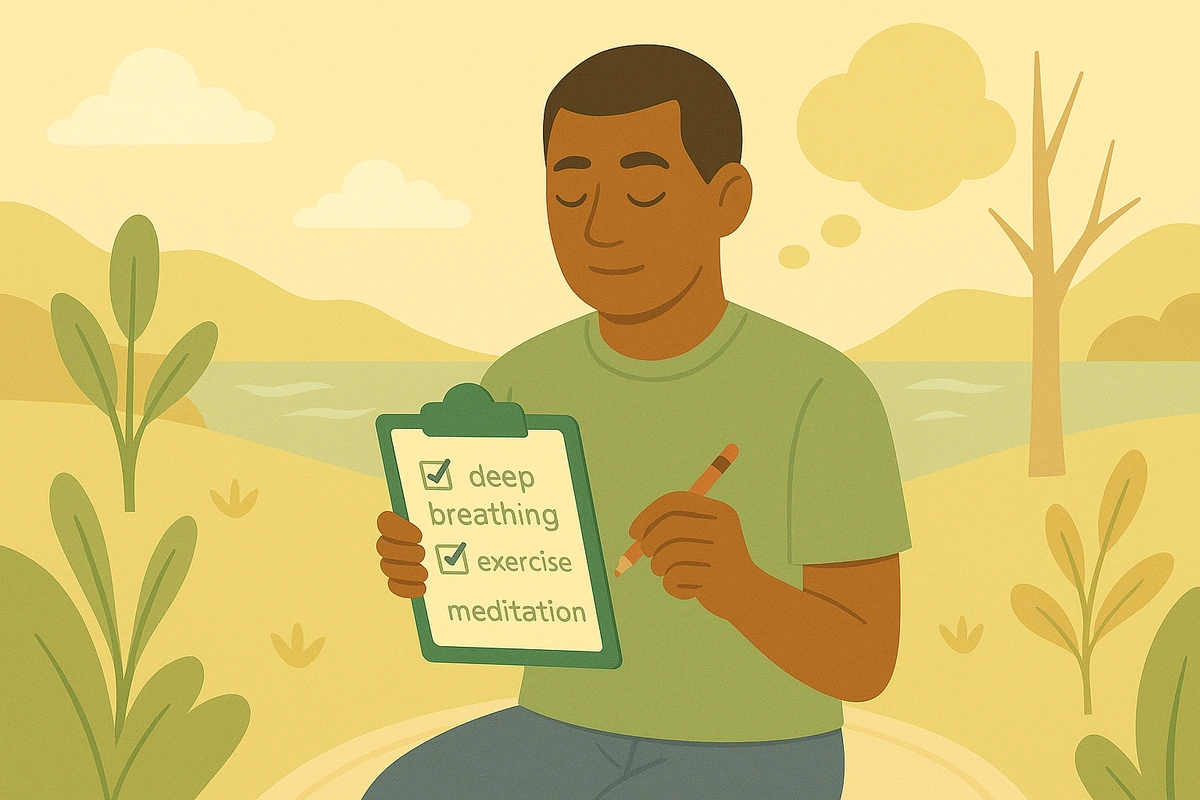Behavioral experiments are like becoming a scientist of your own life, testing your anxious beliefs and assumptions through real-world activities to discover whether your fears match reality, leading to more confident and evidence-based living.

Think of your anxious thoughts as witnesses in a courtroom who might be unreliable or biased. Instead of taking their testimony at face value, behavioral experiments help you gather actual evidence about what really happens when you face your fears. Your anxiety often acts like an overprotective friend who warns you about dangers that don't actually exist, keeping you safe from imaginary threats while limiting your real opportunities for growth and connection.
Unlike regular exposure therapy that focuses on getting used to anxiety, behavioral experiments specifically test the accuracy of your predictions about what will happen. You're not just facing your fear - you're conducting a scientific investigation to see if your worried thoughts match reality. Most people discover that their anxiety has been like a faulty smoke detector, going off for burnt toast when there's no actual fire. This evidence-based approach builds genuine confidence because you learn through experience that you're more capable and the world is less dangerous than your anxiety suggested.
Behavioral experiments work by directly challenging the information your anxiety uses to justify continued fear and avoidance. When you have an anxious belief, your brain searches for evidence that supports it while ignoring contradictory information - a cognitive bias called confirmation bias. By systematically testing your predictions, you force your brain to pay attention to evidence it would normally filter out.
The technique is particularly powerful because it creates experiential learning rather than just intellectual understanding. While you might logically know that "most people won't judge me harshly," your emotional brain doesn't truly believe this until you experience it repeatedly through real-world testing. Research shows that behavioral experiments can be more effective than thought records alone in changing deeply held beliefs because they engage emotions and behaviors, not just thinking.
Unlike exposure therapy that focuses on habituation to anxiety, behavioral experiments work through belief disconfirmation - proving that your anxious predictions are inaccurate. This creates lasting change because you're not just getting used to feeling scared, you're discovering that there's actually less to be scared about than you thought.
The scientific approach helps you develop a more curious, investigative relationship with your anxiety rather than accepting its warnings as absolute truth. Studies indicate that incorporating behavioral experiments into cognitive therapy enhances effectiveness compared to traditional verbal methods alone, particularly for social anxiety and perfectionism.
The technique also builds self-efficacy - confidence in your ability to handle challenging situations. Each successful experiment provides concrete evidence of your competence and resilience, creating an upward spiral where increased confidence leads to more willingness to test fears, which leads to even greater confidence.
Additionally, behavioral experiments help identify and eliminate safety behaviors - subtle ways you protect yourself that actually maintain anxiety by preventing you from learning that you're safe without these protections. Testing what happens when you drop these behaviors often reveals they were unnecessary.
"My experiment confirmed my worst fears - now I feel worse" - Single negative outcomes don't prove that all your fears are justified. Analyze what specifically went wrong, whether it was as catastrophic as predicted, how you coped, and what you learned about your resilience. Often, even "failed" experiments reveal that consequences are manageable and that you're more capable than you thought.
"I completed the experiment but I'm not convinced the results mean anything" - Anxiety often minimizes positive evidence by calling it "lucky," "abnormal," or "temporary." Look for patterns across multiple experiments rather than relying on single instances. Keep detailed records to combat your brain's tendency to forget or dismiss evidence that contradicts your fears.
"I avoided doing the experiment because I was too anxious" - This is valuable information about what level of challenge works for you right now. Design a smaller, easier version of the experiment that feels more manageable, or practice anxiety management techniques first. Avoidance doesn't mean failure - it means you need a different approach.
"I used safety behaviors during the experiment and now I don't trust the results" - Acknowledge the safety behaviors you used and plan a follow-up experiment without them. This gives you a chance to test whether the positive outcome depended on your protective strategies or whether you're actually safer than you thought even without them.
"People responded positively but I think they were just being polite" - This belief itself can become a hypothesis to test. Design experiments that would be hard to explain by politeness alone, ask for honest feedback from trusted people, or observe whether people's actions match their words over time.
"I feel like I'm manipulating situations to get positive results" - Good experiments test realistic scenarios you'd actually encounter in daily life. If you're creating artificial situations, design experiments that reflect more natural contexts where you'd genuinely interact with others or face real challenges.
"The experiment worked but I'm afraid the next one won't" - This anticipatory anxiety is normal and can itself become an experiment. Test whether your anxiety about future experiments is accurate by continuing to gather evidence. Often, success builds on success as confidence grows.
"I don't know what beliefs to test or how to design good experiments" - Start by noticing what situations you avoid and ask yourself what you think would happen if you faced them. Work with a therapist or trusted friend to help identify limiting beliefs and brainstorm creative ways to test them safely and effectively.